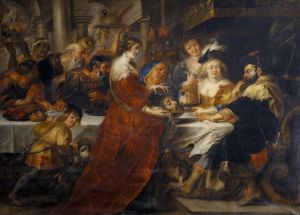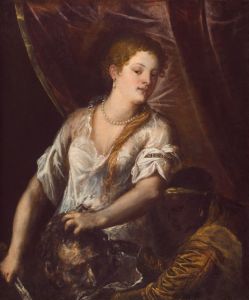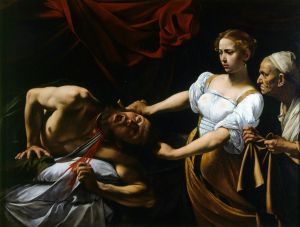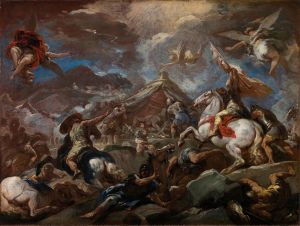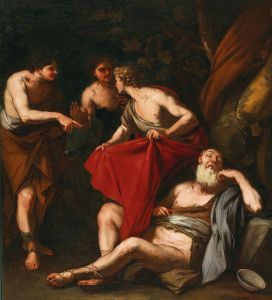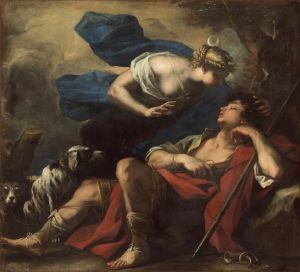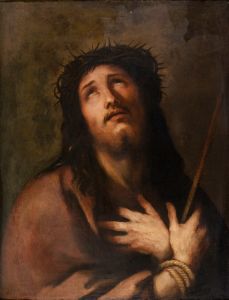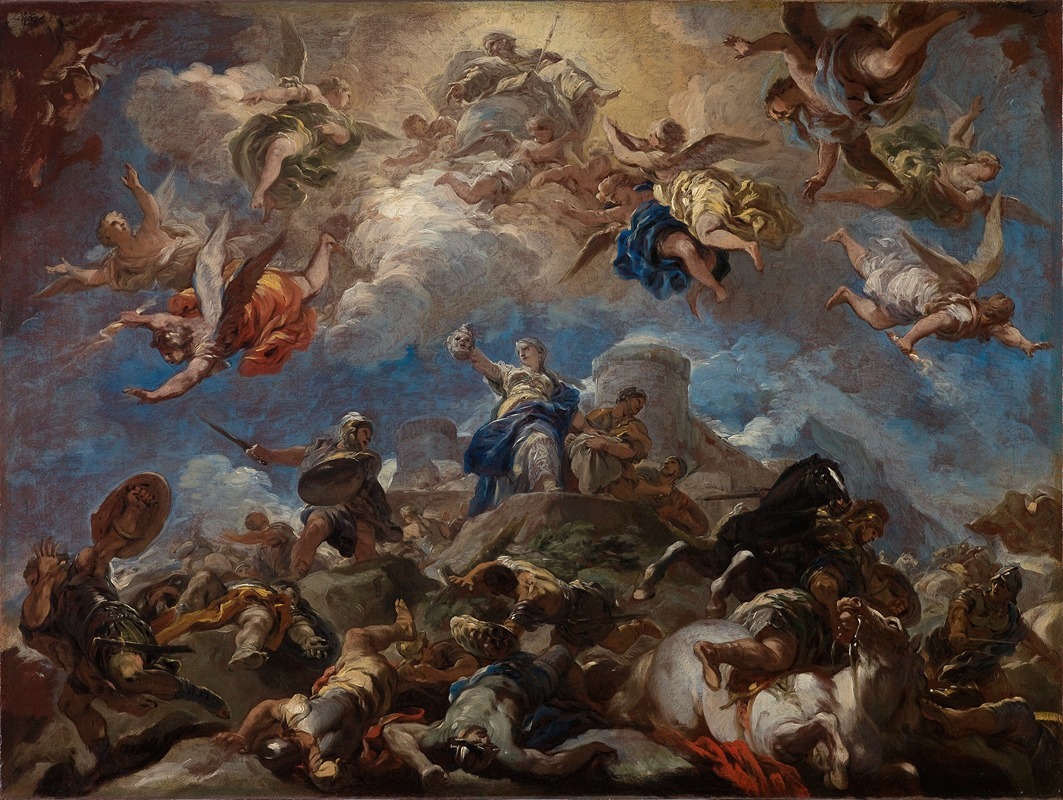
Judith Displaying the Head of Holofernes
A hand-painted replica of Luca Giordano’s masterpiece Judith Displaying the Head of Holofernes, meticulously crafted by professional artists to capture the true essence of the original. Each piece is created with museum-quality canvas and rare mineral pigments, carefully painted by experienced artists with delicate brushstrokes and rich, layered colors to perfectly recreate the texture of the original artwork. Unlike machine-printed reproductions, this hand-painted version brings the painting to life, infused with the artist’s emotions and skill in every stroke. Whether for personal collection or home decoration, it instantly elevates the artistic atmosphere of any space.
"Judith Displaying the Head of Holofernes" is a painting by the Italian Baroque artist Luca Giordano. Giordano, born in Naples in 1634, was a prolific painter known for his rapid execution and versatility in various styles, ranging from the dramatic chiaroscuro of Caravaggio to the more luminous and decorative manner of Peter Paul Rubens.
The painting depicts a scene from the apocryphal Book of Judith, a text included in the Septuagint and the Catholic and Eastern Orthodox Christian Old Testament. The story narrates how Judith, a beautiful widow, saves her city, Bethulia, from the Assyrian army by seducing and beheading its general, Holofernes. This act of bravery and cunning has been a popular subject in art, symbolizing the triumph of virtue over vice and the power of the weak over the strong.
In "Judith Displaying the Head of Holofernes," Giordano captures the moment after the beheading, as Judith holds up the severed head of Holofernes. The painting is notable for its dramatic use of light and shadow, a hallmark of Baroque art, which enhances the emotional intensity of the scene. Judith is often portrayed with a calm and resolute expression, emphasizing her role as a heroine. The head of Holofernes, in contrast, is depicted with a lifeless and gruesome realism, underscoring the violence of the act.
Giordano's treatment of the subject reflects his mastery of composition and his ability to convey complex narratives through visual means. The use of rich, deep colors and dynamic brushstrokes adds to the dramatic effect, drawing the viewer's eye to the central figures and the stark contrast between life and death. The painting also showcases Giordano's skill in rendering textures, from the softness of Judith's garments to the roughness of Holofernes' hair and skin.
Luca Giordano's career spanned several decades, during which he worked in various Italian cities, including Venice, Florence, and Rome, as well as in Spain, where he was appointed court painter to King Charles II. His works cover a wide range of subjects, from religious and mythological scenes to portraits and allegories. Giordano's ability to adapt his style to different contexts and patrons made him one of the most successful and sought-after artists of his time.
"Judith Displaying the Head of Holofernes" is a testament to Giordano's artistic prowess and his ability to convey powerful narratives through his art. The painting remains an important example of Baroque art and continues to be studied and admired for its technical excellence and emotional impact.







